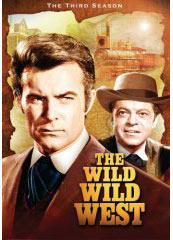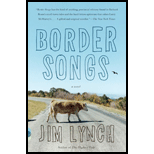Copyright © 2010, Steven E. Houchin
(Originally written October 31, 2010)
It's Halloween, so I figured this topic was damned appropriate:
Scare Quotes.
What is a Scare Quote? Here is the definition from Wikipedia:
Scare quotes are quotation marks placed around a single word or phrase to indicate that the word or phrase does not signify its literal or conventional meaning. In contrast to the nominal typographic purpose of quotation marks, the enclosed word(s) are not necessarily quoted from another source.
In other words, the phrase enclosed in quotes is not dialog and is not a quotation of someone else's words. Instead, the phrase is quoted to indicate that its meaning is not to be taken literally by the reader. The intention of the writer is to indicate sarcasm, skepticism, derision, irony, or doubt over accuracy.
Scare quotes usually show the attitude of the writer, or of the point-of-view character, about a certain subject.
Some examples:
- She demonstrated her "knowledge" on the subject by citing Oprah.
- The driver turned on a hip-hop station and pounded his hands against the steering wheel in time to the "music".
- A reporter began to recite his "objective" account of the incident.
- Our Great Imperious Leader signed an order giving the military full authority to engage in "population control" of undesirables.
When writing scare quotes, you use the same quotation marks that occur throughout your manuscript when writing dialog or including literal, quoted material. That is, if your dialog uses single quotes ('He's dead, Jim.'), then scare quotes use the same. If double quotes ("Take that, sucker."), then use doubles. Single quotes tend to be British formatting, doubles for American. Of course, when inside dialog, the opposite quote mark is used ("Oh, your 'music' is really great.").
An aspect of scare quotes that I consider controversial is this: does sentence-ending punctuation belong inside a scare quote as it does in dialog? Consider these examples:
Dialog: "Take that, sucker."
Scare quote: He hated Eddie's "music".
Versus: He hated Eddie's "music."
In the case of dialog, the ending period is clearly part of the dialog, and thus belongs inside the quotes. For the scare quote, the ending period is
not part of the sarcasm, but simply terminates the narrator's sentence. Strict grammarians insist that, for American English, the punctuation must reside inside the quotes. To me, it just plain looks wrong; the punctuation is not part of the quoted phrase. And, one can find all over the place where authors do place the punctuation outside the quotes. So, it seems to me that this has now entered common usage.
One last thing. Some assert that writers shouldn't use scare quotes at all. The quotes can be replaced by phrases such as so-called, supposed, purported, self-styled, or alleged.
References:
Wikipedia,
Scare quotes
Guide to Punctuation, University of Sussex (UK English),
Scare Quotes
The Chronicle of Higher Education,
What's 'Scary' About Scare Quotes
The Victorian Web,
Punctuation Matters and Matters of Punctuation
Writer's Relief ,
Odds and Ends: Scare Quotes, Exclamation Points, Almost, and Plural Compounds
_01_small.jpg) It is a sub-genre of science fiction or fantasy that is generally set in a Victorian time period - the industrial 19th century - where anachronistic technology of the time (such as steam power) is adapted in ways more common to our modern time, and alternate histories are often presented. Think of H.G. Wells' The Time Machine, or the futuristic gadgets used in the TV series Wild, Wild West.
It is a sub-genre of science fiction or fantasy that is generally set in a Victorian time period - the industrial 19th century - where anachronistic technology of the time (such as steam power) is adapted in ways more common to our modern time, and alternate histories are often presented. Think of H.G. Wells' The Time Machine, or the futuristic gadgets used in the TV series Wild, Wild West. 



 I recently finished reading Sol Stein’s book
I recently finished reading Sol Stein’s book